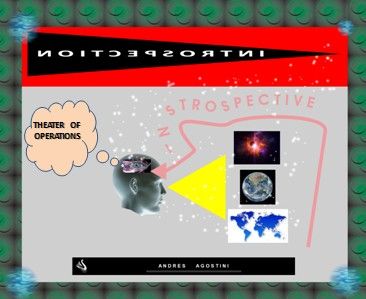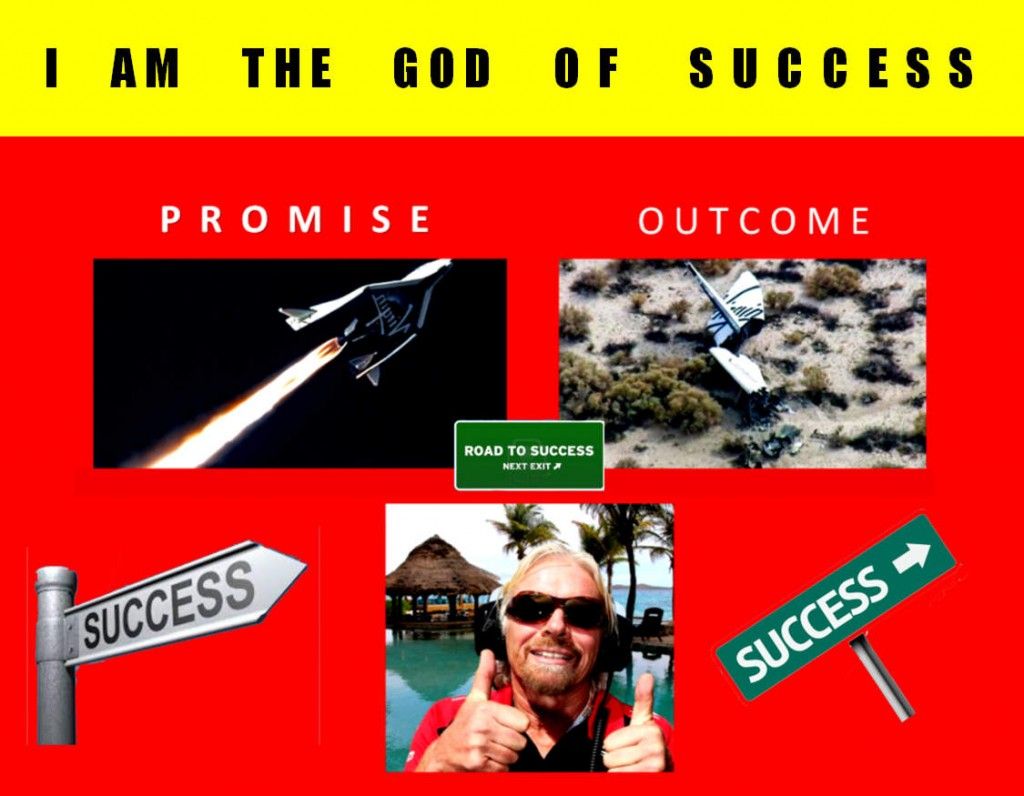CORRECTLY FORESEEING?

Let us stop the guesswork to make decisions by ignoramuses of supine ignorance, beginning with the elitist “…intellectuals…”, specially those postdoctorals from the Ivy-league and Oxbridge.
You do not make (throughput to output) decisions to be instituted in the past, but in the Continual Present, whose Continuum is hugely connected to the Future.
A MAGNIFICENT CATALONIAN TECHNOLOGIST, ASPIRING TO A FULL-TIME EMPLOYEMENT WITH LOCKHEED MARTIN, CROWNED HERSELF WITH THE THRONE OF MOST-ABJECT SIMPLETONNESS BY CONSTANTLY COMPLAINING ABOUT NOT UNDERSTANDING THE LUCID WORKS OF AND BY MR. ALVIN TOFFLER, RAND CORPORATION’S MR. HERMAN KHAN (DR. STRANGELOVES) AND ROYAL DUTCH SHELL’S MR. PIERRE WHACK.
Excellent, one fool less, who eats octopuses, a wonderful animal with one (1) brain and nine (9) sub-brains, sacredly studied by U.S. Navies Researchers.
WHAT DO LUMINARIES SAY OF UTILITY HAVE TO SAY HERE?
ALSO #1 of #16:
Napoleon Bonaparte, to this end, asserted, “…I have only one counsel for you ― be master [.…] No longer it is question simply of education, NOW IT BECOMES A MATTER OF ACQUIRING [HARD] SCIENCE …” Brackets are of the author.
ALSO #2 of #16:
Dr. Carl Sagan, PhD.: “…We live in a society exquisitely dependent on science and technology, in which hardly anyone knows about science and technology…”
ALSO #3 of #16:
Prof. Bruce Bueno de Mesquita, PhD., “… We live in a high-tech age with archaic guesswork guiding life and death decisions …”
ALSO #4 of #15:
“… Change is hard, failure is much harder, and would you rather be sick or would you rather be dead?…” By Harvard Business School professor Clay Christensen Ph.D.
ALSO #5 of #16:
In a June 2012 feature, Jeff Bezos told the Wall Street Journal:
“ … We humans have become so technologically sophisticated that in certain ways we’re dangerous to ourselves. It’s going to be increasingly important over time for humanity to take a longer-term view of its future …”
ALSO #6 of #16:
Jacob Bronowski advised, “ … We are a scientific civilization .… that means a civilization in which knowledge and its integrity are crucial. Science is only a Latin word for [organized] knowledge .… knowledge is our destiny …”
OTHER STUPIDS:
(1.-) Science is Organized Knowledge.
(2.-) Wisdom is Organized Life.
ALSO #7 of #17:
Professor Stephen Hawking warned: ” … Mankind must colonize other planets to survive [….] THE LONG-TERM SURVIVAL OF THE HUMAN RACE IS AT RISK AS LONG AS IT IS CONFINED TO A SINGLE PLANET [.…] SOONER OR LATER, DISASTERS SUCH AS AN ASTEROID COLLISION OR NUCLEAR WAR COULD WIPE US ALL OUT. BUT ONCE WE SPREAD OUT INTO SPACE AND ESTABLISH INDEPENDENT COLONIES, OUR FUTURE SHOULD BE SAFE [….] There isn’t anywhere like the Earth in the solar system, so we would have to go to another star …”
ALSO #8 of #16:
Albert Einstein observed, “ … It has become appallingly obvious that our technology has exceeded our humanity …”
ALSO #9 of #16:
Cambridge University’ Sir Martin Rees, Ph.D. (British Astronomer Royal) noticed, “ … Science is emphatically not, as some have claimed, approaching its end; it is surging ahead at an accelerating rate. We are still flummoxed about the bedrock nature of physical reality, and the complexities of life, the brain, and the cosmos. New discoveries, illuminating all these mysteries, will engender benign applications; but will also pose NEW ETHICAL DILEMMAS AND BRING NEW HAZARDS …. BUT THERE IS A DARK SIDE: NEW SCIENCE CAN HAVE UNINTENDED CONSEQUENCES; IT EMPOWERS INDIVIDUALS TO PERPETRATE ACTS OF MEGATERROR; EVEN INNOCENT ERRORS COULD BE CATASTROPHIC. THE ‘DOWNSIDE’ FROM TWENTY-FIRST CENTURY TECHNOLOGY COULD BE GRAVER AND MORE INTRACTABLE THAN THE THREAT OF NUCLEAR DEVASTATION THAT WE HAVE FACED FOR DECADES. AND HUMAN-INDUCED PRESSURES ON THE GLOBAL ENVIRONMENT MAY ENGENDER HIGHER RISKS THAT THE AGE-OLD HAZARDS OF EARTHQUAKES, ERUPTIONS, AND ASTEROID IMPACTS …”
ALSO #10 of #16:
Charles, Prince of Whales, observed: “ … The strategic threats posed by global environment and development problems are the most complex, interwoven and potentially devastating of all the challenges to our security. Scientists …. do not fully understand the consequences of our many-faceted assault on the interwoven fabric of atmosphere, water, land and life in all its biological diversity. Things could turn out to be worse than the current scientific best guess. IN MILITARY AFFAIRS, POLICY HAS LONG BEEN BASED ON THE DICTUM THAT WE SHOULD BE PREPARED FOR THE WORST CASE. WHY SHOULD IT BE SO DIFFERENT WHEN THE SECURITY IS THAT OF THE PLANET AND OUR LONG-TERM FUTURE? …” [229]
ALSO #11 of #16:
Prof. Daniel Berleant Ph.D. observes, “… Will we destroy ourselves in a matter of years, decades, or centuries, or will we last indefinitely? Many people see our increasing power over nature, coupled with self-destructive tendencies, leading us to destroy ourselves [.…]Perhaps we will transcend both technology-enabled self-destruction and normal evolution …”
ALSO #12 of #16:
And a Sephardi Hebrew, gave me an Arab adage that argues,
“… The one who foretells the future correctly, lies even if he is telling the truth …”
ALSO #13 of #16:
However, as a counterpoint Lockheed Martin argues:
“… What’s impossible today won’t be tomorrow …”
ALSO #14 of #16:
Subsequently, the hugely-ignored Chinese proverb indicates,
“…Don’t look at the waves but the currents underneath…”
ALSO #15 of #16:
Nevertheless, the Panchatantra (body of Eastern philosophical knowledge) establishes,
“… Knowledge is the true organ of sight, not the eyes … ”
ALSO #16 of #16:
And Antonio Machado argues,
“… An eye is not an eye because you see it; an eye is an eye because it sees you …”
N.B.: IT IS ARGUED IN MY LINKEDIN PROFILE MY GARGANTUANEST INCLINATION IN WOMB-TO-THINKING THROUGH THE OMNISCIENCE PERSPECTIVE.
ABSOLUTE END.
Authored By Copyright Mr. Andres Agostini
White Swan Book Author (Source of this Article)
http://www.LINKEDIN.com/in/andresagostini
http://www.AMAZON.com/author/agostini
https://www.FACEBOOK.com/agostiniandres
http://www.appearoo.com/aagostini
http://connect.FORWARDMETRICS.com/profile/1649/Andres-Agostini.html
@AndresAgostini
@ThisSuccess
@SciCzar







